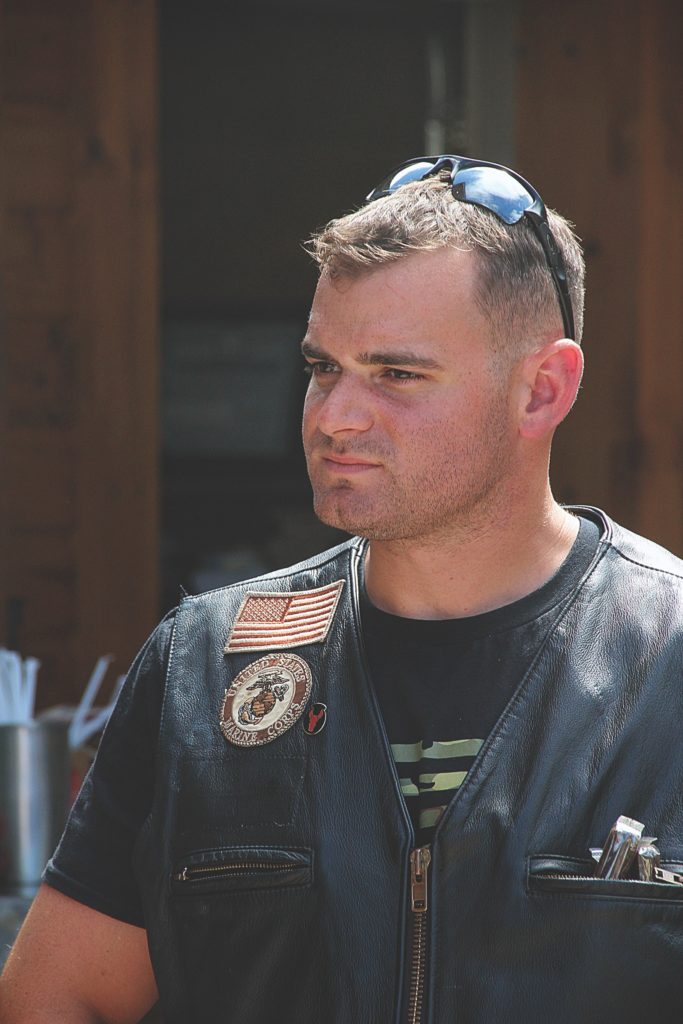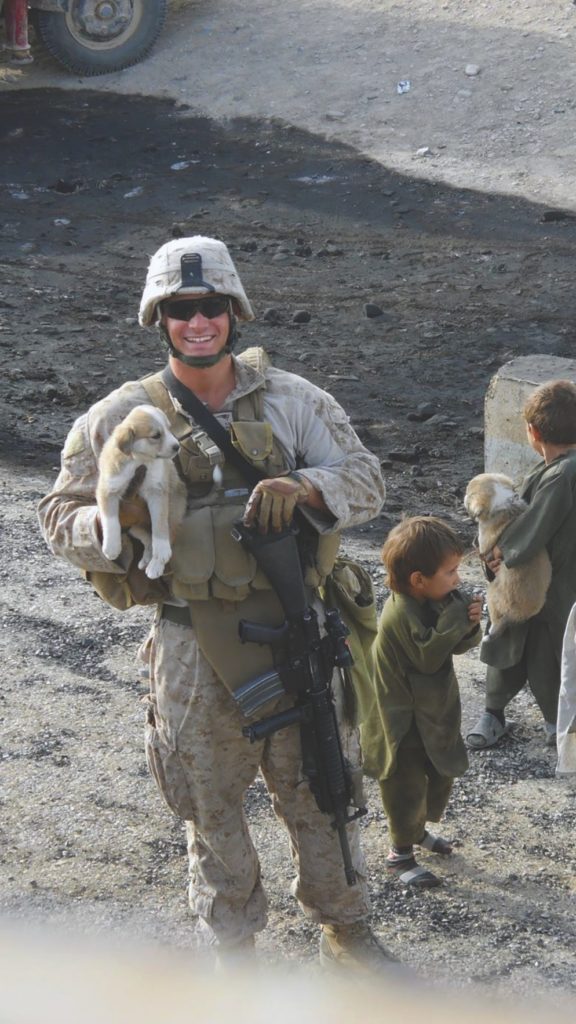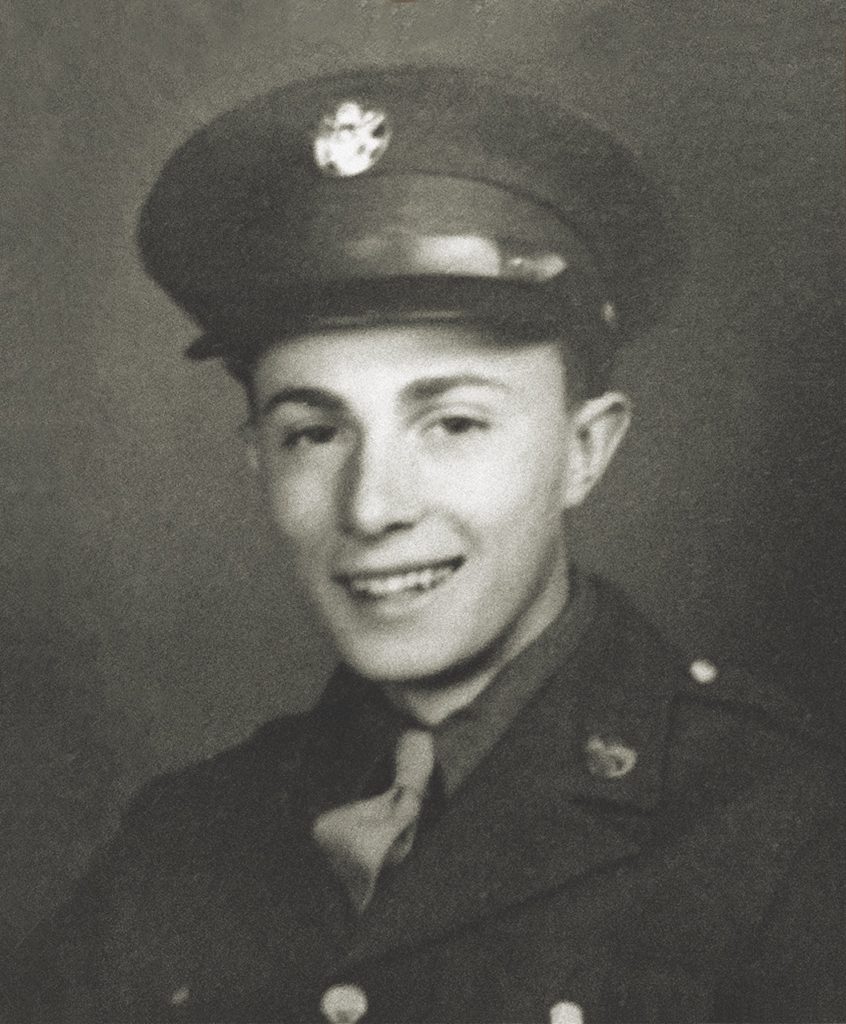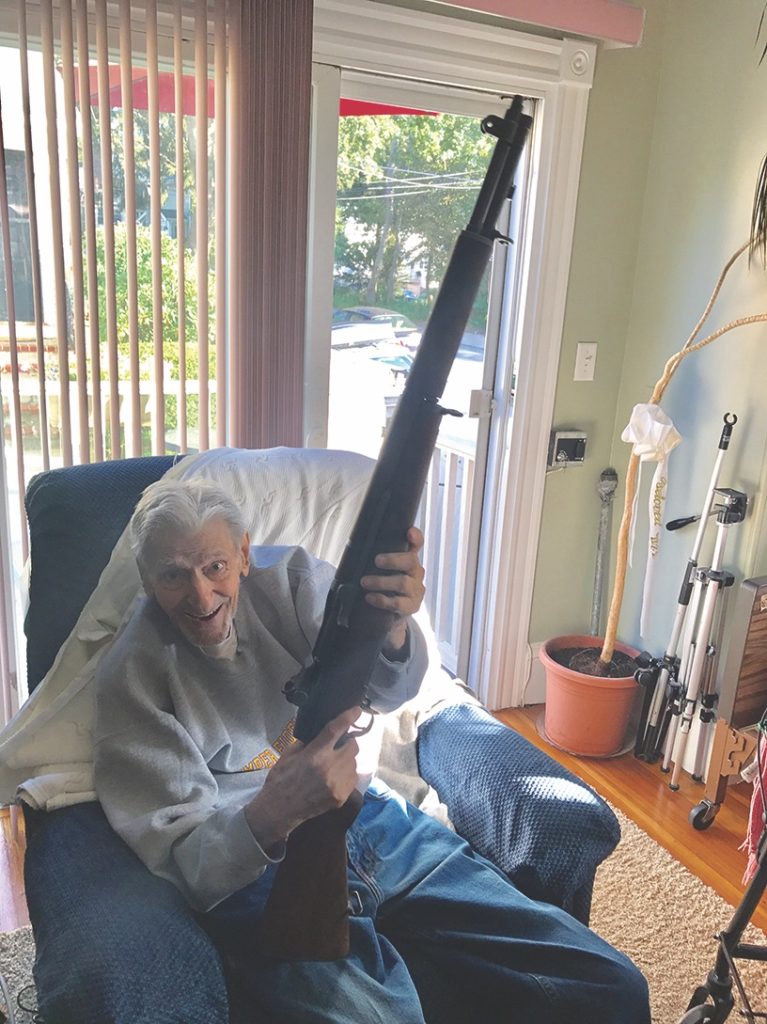The once-ubiquitous weapon prompted an outpouring of memories from World War II veterans. Andrew Biggio, author of The Rifle (2021), was listening
IN THE SUMMER OF 2011, Andrew Biggio, then a 23-year-old sergeant in the U.S. Marine Corps, was near the end of his tour in Afghanistan when his platoon came across a group of Afghan police gathering the bodies and body parts of dead comrades—victims of a roadside bomb. As the men struggled to wrestle one corpse into a body bag on the back of a pickup truck, they lost their grip. The body hit the pavement, making, Biggio recalls, a “disturbing sound unlike any I had heard before.” He put the incident out of his mind—or so he thought. Two years later, back home in Winthrop, Massachusetts, he was in a crowded grocery store when a large melon fell from a woman’s shopping cart, making a noise just like that body in Afghanistan. The horrors of that day were suddenly before him. He abandoned his cart, bolted from the store, and headed home.
On the way, he passed a sign he’d passed many times before, “Andrew Biggio Square”—marking a place named after the man he himself was named for: a great-uncle he’d never met, killed in Italy at age 19 in 1944. This time, though, questions flooded his mind, and he felt compelled to learn more about his uncle, his war, and how he’d lost his life. He began by buying a rifle—an M1 Garand—like the one his uncle carried in the war, and took it with him when he talked to a World War II veteran neighbor. That one interview led to many more—his subjects all signing the rifle—and to a series of discoveries. The results are in his new book, The Rifle: Combat Stories from America’s Last WWII Veterans, Told through an M1 Garand.
How did this project start?
On my tour in Afghanistan, I wore my great-uncle’s division patch on my vest just to honor him. He was in the 34th Infantry, the Red Bull Division. He was on my mind—an Andrew Biggio who didn’t come home from war—and I felt obligated to wear his U.S. Army patch even though I was a Marine. After my tour ended, I felt bad; I’m enjoying my life, and he didn’t even get to start his. I started to read his letters, this infantryman in Italy. He wrote home to his mom—my great-grandmother—a lot. He was close to her. It was very hard on her when he died. My uncle was her firstborn son. I was told that she never put the Christmas tree up again.
I wanted to find out what happened to my uncle. If this were the 1980s, I probably would have been more easily able to find survivors who served with my uncle in the Red Bull Division in Italy—but then I might not have met these other veterans. Instead, I kept running into these other individuals, people who served all over, whose stories were just as important to me.



Where did you begin?
The first guy I interviewed was my neighbor, Joe Drago. Crusty old Joe. I knew him as a kid, and he always seemed old to me. I knew he had been a Marine in World War II but didn’t know much else. I brought the rifle over to him, and he told me about his time on Okinawa. “There was no such thing as a war crime,” he told me. They had orders to shoot to kill anything that moved. Joe and the other Marines did what they had to do to survive. It was hell. He gave me a bag with what I thought were pebbles. They were gold teeth he had taken from dead Japanese soldiers. As a kid, I thought Joe was just this grouchy old man. I came away with a different view of him after that.
Did these men open up more to you because you are a veteran too?
I think so. I know so. Other people have written stories about some of the men in my book and said, “Wow! He never told me that.”
Some vets broke down crying telling me about friends they lost 75 years ago. Some never even told their families what they went through. That’s actually what inspired me to write the book. I must have been at least 30 signatures deep into the rifle when someone commented, “I never heard Grandpa say that before.” That’s when I thought I shouldn’t be selfishly getting their signatures on my rifle— I should be telling their stories.
The M1 Garand helped the veterans open up too. You should have seen how these guys came alive holding the rifle! They just started telling me stories. In the first printing of the book, I list the 175 names then on the rifle. The second printing will have 200-plus names. I keep adding signatures to the rifle as I meet more veterans.
Did any individuals in particular stand out to you?
The vets I picked for the book all inspired me. There was one fellow—he was hard as nails: Lawson Sakai of the 442nd Regimental Combat Team. I didn’t have any Japanese Americans on my rifle, so I really wanted to include him. I met him in Las Vegas at his unit reunion in 2017 or 2018. This was the last reunion before COVID-19. I got Lawson, Yoshio Nakamura, and Jerry Gustafson—all members of the 442nd—to sign my rifle. I was hanging out with Nisei veterans! Lawson has two Bronze Stars and three Purple Hearts. The odds were stacked against these men, and they end up becoming the most decorated infantry regiment of all time. They are damn proud of who they are. They proved the whole country wrong. They are so proud of this country even though we weren’t totally fair to them. Lawson’s story in my book is entitled “Enemy Alien” because that is what he was told he was when he couldn’t enlist. Lawson and his White friends went to the recruiting office. The others were allowed to join and were jumping up and down with excitement. He’s walking out of there with them, humiliated. I’ll never forget a 95-year-old Lawson reminiscing about that. He told me he said to the recruiter, “But I’m an American.” To hear his voice crack remembering that was sad. He went on to be a friggin’ badass! He’s lucky to be alive. One of his wounds—shrapnel through the ribs—should have killed him.



You discovered other injustices.
Italy is the forgotten front of World War II. We do not remember the war in Italy like we remember it in France or the Pacific. I brought two World War II vets back to Italy for the 75th anniversary of the liberation of Rome, and we were the only ones there. There wasn’t a wreath, a flag-raising, anything. I remember looking at these guys, and one said, “In 1994, President Clinton was here. We had ceremonies. We had marching bands. What happened?” I didn’t know what to tell them. We were in Rome on June 4, 2019—75 years after the first Nazi capital fell—and there was nothing. Two days later, it’s June 6 and there are hundreds of thousands of people in Normandy for the 75th anniversary.
The Allies were slogging through Italy in September and October 1944. It’s almost like Vietnam. Soldiers are asking, “If troops are in Holland ready to cross the Rhine, why am I in Italy climbing this hill with machine guns and artillery pointed at me?” For the first time, these vets are admitting to me they were questioning what was happening. There are stories of mutiny, dereliction of duty, going AWOL. Guys were refusing orders by officers to go on suicide missions. I heard this from everyone who was in Italy post-Normandy. I see it even in my uncle’s letters. You can see how demotivated he is. He wants his mother to mail him a gold cross. He says how he doesn’t want to go up this hill again. It matches what these men in their late nineties were telling me.
The Germans had the Po Valley. The Gothic Line was the last brutal assault the Americans had to make. Reading the after-action reports and seeing the casualty lists from that period, I’m thinking, “These poor kids. My poor uncle.” They got the short end of the stick, but it had to be done. They had to hold 30 German divisions in Italy so the German troops could not reinforce the Russian or Western fronts.
One of the last men to sign your rifle had been in Italy with your uncle.
Ed Hess had been in the same company. September 17, 1944, was when my uncle was killed, the same day Operation Market Garden—the attempted liberation of Holland—was going on. His division started its mission to penetrate the Gothic Line about a week earlier.
This German defensive line was right outside of Barberino, Italy, part of the North Apennines campaign. My uncle’s unit—B Company—was the first to trek up this hill and it was not going well: U-shaped trenches, no cover, nowhere to hide, trees cut down, snipers, machine gun nests, pillboxes.
I pushed my grandfather, in a wheelchair at age 88, up the hill where his older brother was killed. It was surreal, for sure. It was inaccessible by vehicle. The G.I.s had to use pack mules. If you got wounded, it was almost impossible to get you out of there. They lost their platoon commander right away, killed by a sniper. They lost a platoon sergeant. There’s barbed wire and concertina wire all over the hill. When I walked up, it was all green vegetation with people picking mushrooms and riding dirt bikes. I saw a model of it at the Gothic Line Museum [in Tuscany]; it was a muddy, stumpy, barbed- wired mess.
B Company had difficulty moving men up the hill to face certain death. My uncle volunteered to carry the radio. The after-action reports sent to my great-grandmother said he had taken shrapnel through his stomach and out his lower buttocks.
Ed Hess told me that a couple of days before then, he just couldn’t do it anymore. He had been lugging a Browning Automatic Rifle [BAR] since Anzio, and he finally reached his breaking point. He went to the bottom of the hill. Ed starts to hear how hard B Company was having it. A lieutenant sees him there and sends him back up the hill with the Graves Registry Service to bring back the casualties. When Ed went up there, they found 37 bodies. To have to go up and down with all those bodies had to be tough.
When I interviewed Ed, he broke down in tears. “So many times, I went out and everybody got hurt or killed and I never got a scratch,” he said. Ed died last year at 101. We don’t know what it’s like to survive Anzio and the Gothic Line and then continue to carry a BAR up the hill. I can’t judge him. The guy comes home, has two careers, and takes care of a disabled child for 50 years. That’s a man. I bet there are people who called him a coward that day, especially that lieutenant who made him go back up the hill. Ed came home and lived the life of a man I hope to be. I wish I could have told him that to his face.
How did you feel when you learned about your uncle’s death?
Hearing that my uncle died doing his job made me very, very proud. Andy, only 19 years old, stayed up there. He’s got the radio, so he has to give commands of where the Germans are. There was a mortar barrage. Now when you hear mortars start to fall, you get down. The wounds he had tell me he was standing before he was hit, probably giving positions of the Germans. He wouldn’t have had the same wounds if he were ducking for cover.
What did you take away from this experience?
There’s a two-prong learning experience for me—one as a veteran and the other as an average joe. I learned you can live a successful life after combat. These men did it. Some of them saw worse things than me and came home to have careers, lives, families, and live well into their nineties. The other part was that war isn’t just black and white. They told me more stories about being scared, civilians being killed, and killing SS soldiers—just marched them into the woods and shot them—or removing gold teeth from dead soldiers. They taught me that sometimes the Greatest Generation wasn’t so great. They did things to win that would get you in trouble today. That really made me feel like I did not have to hide in their shadow as a young veteran who served in maybe not such a popular war. They really broke it down for me with the behind-the-scenes stuff. It was total war. The stuff you see in movies—they didn’t see much of that. World War II wasn’t black and white. It wasn’t swing dancing and big band music or good versus evil. It wasn’t. These guys were mostly scared. That was a breath of fresh air. ✯
This article was published in the December 2021 issue of World War II.





